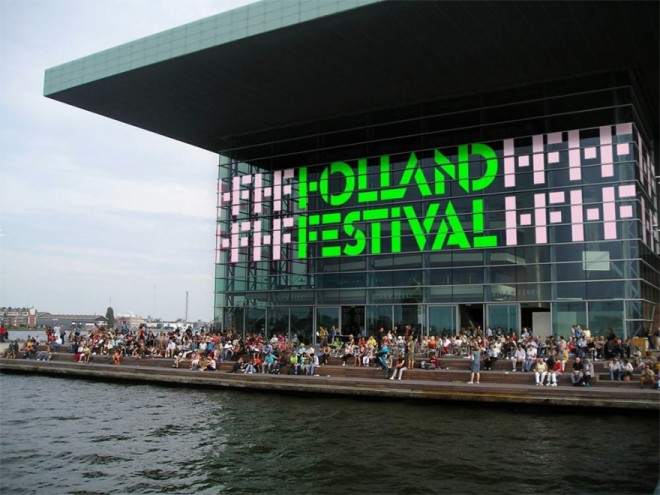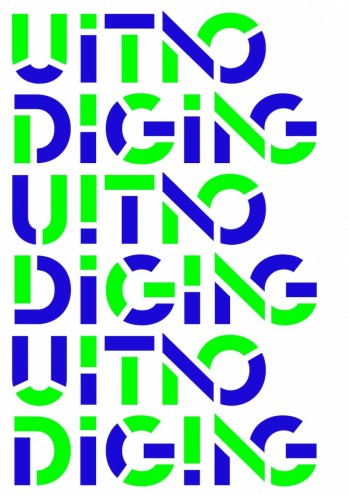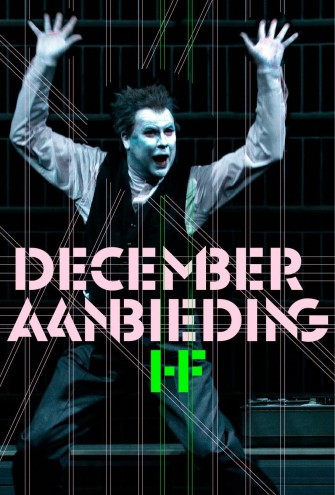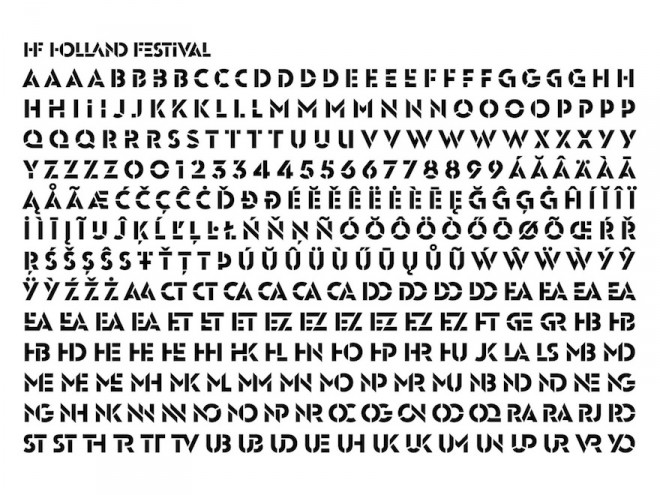In a neat bit of symmetry, the evolution of the graphic identity for the Holland Festival could be said to mirror the development of Dutch design in general. The identity of the performing arts festival, which presents critically acclaimed and experimental work by international artists, has gone through a systematic process of simplification to arrive at a pared-down logo and visual language.
In 1995 Anthon Beeke adopted an austere, conceptual style for the event. He removed letters from the festival title, which was the first step towards creating a logo.
In 2005 Maureen Mooren and Daniel van der Velden radicalised Beeke’s reduction even further to create the simpler "HF" logo.
Now Amsterdam-based visual communications studio Thonik has redesigned it again to herald the festival's new artistic director, Ruth Mackenzie, previously director of the London 2012 Festival (the official cultural programme for the London 2012 Games).
"A logo is the simplest way of becoming recognised in the deluge of commercial signs and symbols we face every day," says Thonik’s co‑director Thomas Widdershoven.
It is about becoming as visible as possible in the public domain where commercialism is the spoken language, he notes. And to work, the logo must connect a visual quality with context and content.
Thonik took the HF logo and combined the letters into a ligature, a combination of letters designed to formally interact. Along the way, they created a new font.
The designers used Swiss typeface Euclid Flex as a starting point for the design of the HF ligatures, with early investigations focussed on whether it was possible to make this abbreviation without alienating current audiences or confusing new ones.
The first results of the ligature made graphic sense, but were illegible and unclear. More elements needed to be deleted for the full impact and clarity of the concept to shine. So, after joining everything together they needed to find a way to rip it apart again. They found their solution in Milton Glaser’s 1970 font Glaser Stencil.
Based on US designer's combination of ligatures and stencil-like lettering, Thonik created a whole new typeface in collaboration with font foundry Bold Monday. Thonik worked previously with Bold Monday on typefaces for the Royal Theater Carré in Amsterdam and Dutch Television network VPRO.
“Of course the content of the festival will also become part of its visual communication,” says Thonik’s co‑director Nikki Gonnissen. “But we felt that since the art images merge with information, the typography should also be reworked. Now the photography and the typography are both altered so the interaction becomes more meaningful.”
For this first Thonik edition of the Holland Festival, dubbed the “Festival Edition”, the colour palette is a strong green and blue with a paler contrasting pink. Green stands for a renewed spring and a clean idea. “A fresh impulse from a new creative director,” explains Gonnissen. And blue is the night sky - an evening out at the theatre.











